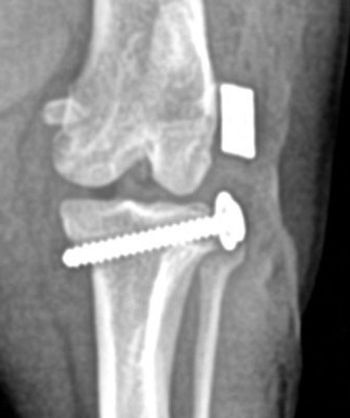
Equine infectious anemia outbreaks cause death of over 20 horses
Horses have tested positive for the potentially fatal blood-borne infectious disease in multiple southwest states in the US.
The US Department of Agriculture’s Animal and Plant Health Inspection Service (USDA-APHIS) has confirmed through its investigation that 21 horses in the southwestern US have tested positive for equine infectious anemia (EIA)—also known as swamp fever or Coggins disease. EIA is a potentially fatal blood-borne infectious viral disease that produces a persistent infection among equids. As of late May 2025, California, Colorado, Oklahoma, and Texas have all had equids that tested positive for the disease.1
The Equine Disease Communication Center (EDCC) disclosed that the cases occurred in 2 clusters, one during May 2024 and another ranging from mid-June to August 2024. The ages of horses infected in these clusters range from 2 to 14 years old, and Quarter, Andalusian, Paint, and Rocky Mountain horses have been affected, explained Angela Pelzel-McCluskey, DVM, MS, APHIS national equine epidemiologist, during a National Equine Industry Stakeholder Call.2 Of the affected horses, few had the typical risk factors, like international travel, and represented different disciplines.3
A joint investigation with APHIS, state veterinary medical boards, and state agriculture departments began in March 2025 to identify potentially exposed horses for testing. However, Pelzel-McCluskey warned that the disease is likely being spread through iatrogenic transmission (disease resulting from medical activity), and clinical signs of EIA include anemia, fever, low platelet count, and muscle weakness. Any owners concerned about their horse potentially being exposed should contact their veterinarian and get their horse tested.
Clusters of EIA-positive horses in May, June, and August 2024 were found to have originated from an equine clinic in Texas. USDA-APHIS obtained the complete medical history of the 21 confirmed horses, and they were then placed in the intensive care unit and had an intravenous catheter placed and flushed. At this time, the investigation indicated that the infections were caused by EIA-infected blood contamination of heparinized saline in multiple-use bottles that were used to flush catheters at the clinic repeatedly by employees.3 The USDA has stated that it is possible that not every horse exposed has been tested, so any concerned owners should be instructed to call their veterinarian and get their horse(s) tested.
As for the investigation, the next step is to create a more complete list from the clinic’s appointment book of those horses that were exposed to create an affected time range, while also completing EIA regulatory testing on the potentially exposed horses. Testing will then be completed on cohorts that contain any EIA-positive cases.
“Although the current prevalence of EIA in the US equine population remains very low, at an estimated national prevalence of around 0.004%, the epidemiology of EIA-positive cases has shifted in recent years. Most EIA cases were previously found to occur from natural transmission by biting fly vectors in untested and undertested populations. Increasing cases of iatrogenic transmission are now being identified,” APHIS stated in its 2023 report on EIA cases in the US.4
The EDCC has current information on EIA, including background information and alerts for new cases. The American Association of Equine Practitioners also has guidelines that veterinary professionals can access on the disease, as well as an owner fact sheet.
Reference
- EIA outbreak kills 21 horses in Southwest US. News release. American Veterinary Medical Association. June 13, 2025. Accessed June 20, 2025. https://www.avma.org/news/eia-outbreak-kills-21-horses-southwest-us
- May 2025 - National Equine Health Industry Stakeholder Call. Equine Disease Communication Center YouTube page. May 15, 2025. Accessed June 20, 2025. https://www.youtube.com/watch?v=ZPfYO6gv44o
- EIA cases began at Texas veterinary clinic. News release. Equine Disease Communication Center. May 30, 2025. Accessed June 20, 2025. https://www.equinediseasecc.org/news/article/Cluster-of-EIA-Cases-Originated-at-Texas-Veterinary-Clinic
- 2023 equine infectious anemia cases in the United States. United States Department of Agriculture. Accessed June 20, 2025. https://www.aphis.usda.gov/sites/default/files/2023-eia-report.pdf
Newsletter
From exam room tips to practice management insights, get trusted veterinary news delivered straight to your inbox—subscribe to dvm360.






